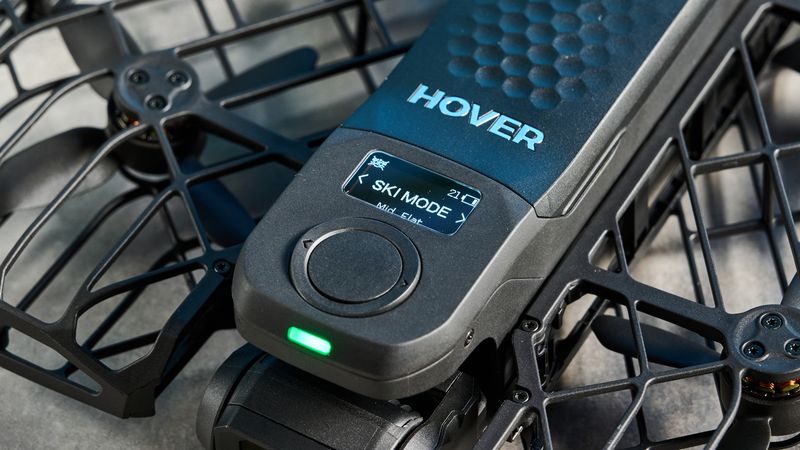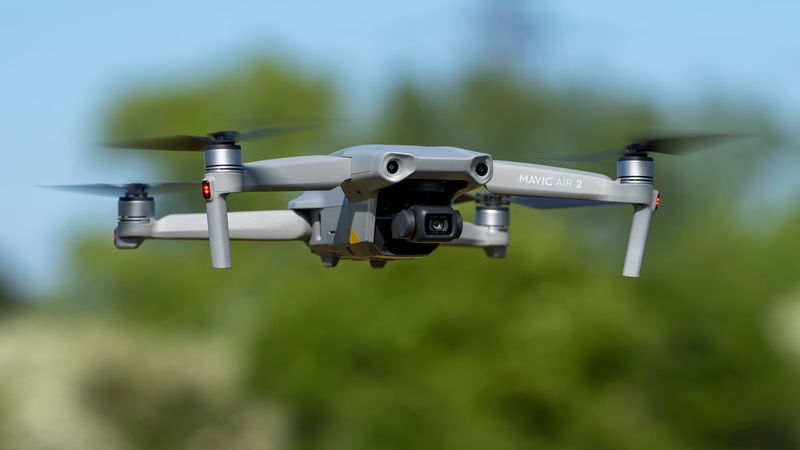
Your next great travel story might come from 120 meters up. For digital nomads, a foldable drone is the difference between ordinary content and wow-factor footage that wins clients and followers. This curated list cuts through specs and hype to highlight portable, regulation-friendly drones you can actually travel with in 2025. From ultra-light 249 g flyers to pro-grade rigs, discover the perfect balance of portability, image quality, and price for your journey.
Parrot Anafi UKR

The Parrot Anafi UKR refresh brings new life to a minimalist classic, aligning neatly with nomad priorities: low weight, quick folding, and a 48 MP camera. Its design is ideal for creators who pack lean and move often, providing credible image quality without overcomplicating setup. While its obstacle-avoidance system trails premium flagships, mindful pilots will appreciate the simplicity and reliability. The Anafi’s portability shines in tight co-working spaces and spontaneous golden hours, letting you launch quickly and discreetly. Battery life is respectable, and the camera’s detail is solid for social content and lightweight client work. For travelers who prioritize size, speed, and practicality over bleeding-edge sensors, the UKR version is a smart, budget-friendlier companion that captures compelling footage without dominating your backpack.
DJI Mini 4 Pro

The DJI Mini 4 Pro remains a go-to for nomads who want flagship-adjacent features in a palm-sized drone. Its compact form slips into sling bags and daypacks, while the camera delivers sharp detail, strong stabilization, and dependable color for travel reels. Intelligent modes simplify solo shooting, making it ideal for creators juggling laptop edits and client calls. Flight time is solid, though heavier drones may eke out more minutes—worth noting for marathon shoot days. Still, the Mini 4 Pro’s sub-250 g classification helps with travel regulations and spontaneity. Transmission quality and obstacle sensing keep flights confident in urban or coastal environments. If you value a proven ecosystem, slick app experience, and superb portability, this drone is tailor-made for mobile creators and freelancers.
DJI Flip

The DJI Flip lands squarely in the sweet spot for digital nomads: ultra-portable, under 249 g, and impressively capable. Its 1/1.3″ sensor captures 48 MP photos and crisp 4K60 footage, giving creators pro-grade results without bulky gear. Foldable arms make it pocketable for train hops, hostel lockers, and one-bag setups, while modern transmission keeps your preview stable on the go. Because it’s relatively new in 2025, ecosystem depth—like third-party accessories—may be growing. Still, its travel-first design, high camera quality, and nimble handling make it a compelling pick for creators moving fast between cities and beaches. If you value minimal weight, credible low-light, and easy packing, the Flip’s blend of image performance and portability is hard to beat for nomadic workflows.
Autel EVO Nano Plus

The Autel EVO Nano Plus is a pocket-friendly powerhouse tuned for travelers who want strong imaging without the bulk. Its compact, foldable body and light weight make it an easy everyday carry, while the camera punches above its size for Instagram, YouTube, and client-ready clips. Autel’s color science and stabilization yield pleasing footage in varied light, especially at dawn and dusk. You may sacrifice some wind resistance and advanced sensors compared to larger drones, but the trade-off rewards mobility. Setup is fast, the app is intuitive, and the kit’s accessories fit neatly in small bags. For digital nomads who need quick launches between café sessions and sunset hikes, the Nano Plus checks the boxes for convenience, quality, and compelling value.
Holy Stone HS720

The Holy Stone HS720 is a budget-friendly foldable that appeals to nomads testing the drone waters without a premium price tag. Its folding arms, straightforward controls, and decent stabilization make it approachable for beginners and casual creators. While the camera and sensors won’t rival pro models, it’s perfectly serviceable for travel vlogs, scouting locations, and learning aerial composition. Battery life and range are respectable for the price, and the folding design tucks neatly into carry-on compartments. Expect fewer pro codecs, limited low-light prowess, and simpler obstacle features—but that also means less complexity. If you value affordability, reliability, and a gentle learning curve, the HS720 is a practical starter that can still deliver memorable travel shots for social platforms.
HOVERAir X1 PRO

The HOVERAir X1 PRO leans hard into ultra-portability, making it a stellar choice for creators who live out of a carry-on. Under 249 g and incredibly compact, it slots between your hard drive and notebook, ready for quick lifts during coffee breaks or between co-working sessions. Its strength lies in convenience: rapid deployment, simple controls, and travel-friendly features. While flight time and advanced camera controls are more limited than bigger drones, the convenience-to-quality ratio is excellent for social-first content. It’s a brilliant everyday companion for capturing B-roll, establishing shots, and behind-the-scenes clips in tight urban spaces. If your workflow prioritizes agility, minimal weight, and fast content turnover, the X1 PRO shines as a nimble tool that’s always with you.
DJI Mavic Air 2

The DJI Mavic Air 2 remains a best-value staple for nomads who want dependable performance without chasing the newest release. It balances a robust camera, solid flight time, and reliable transmission in a foldable package that travels well. While a bit larger than ultra-compact models, it rewards you with better wind resistance and confident handling. Image quality and stabilization still hold up for client deliverables and polished travel films, with intelligent modes reducing solo-operator stress. Accessories are abundant, batteries are easy to source, and the ecosystem is mature. If you can spare slightly more bag space, the Air 2 delivers a stable platform that punches above its price, making it an enduring pick for budget-conscious pros and ambitious creators alike.
DJI Mavic 2 Pro

The DJI Mavic 2 Pro persists in 2025 as a workhorse for creators who prioritize image quality and control. Its Hasselblad-branded camera, larger sensor, and rich color profile produce footage that still satisfies demanding clients. Foldable design keeps it travel-feasible, though it’s heavier and bulkier than sub-250 g rivals. Expect excellent dynamic range, strong low-light, and stable flight in windier conditions—great for coastal shoots and mountain ridges. Batteries are larger, and carrying spares adds weight, but the results often justify the haul. If you’re a nomad delivering premium content—documentaries, tourism promos, branded reels—the Mavic 2 Pro offers a pro-worthy balance of portability and cinematic output, even as newer models nibble at its legendary reputation.
Ruko F11 GIM2

The Ruko F11 GIM2 targets travelers who want long-range capability and useful features without flagship pricing. Its foldable build packs easily, while the stabilized gimbal delivers smooth footage suitable for social media and travel logs. You’ll appreciate the range and straightforward controls when scouting remote beaches or mountain trails. Build quality and premium features can lag top-tier brands, but the value is undeniable for budget-minded explorers. Battery performance is competitive, and the included accessories stretch your shooting day. For nomads who need reliable coverage of big landscapes on a reasonable budget, the F11 GIM2 supplies practical performance, solid stabilization, and a confidence-boosting range that makes capturing wide, cinematic vistas both achievable and affordable.






